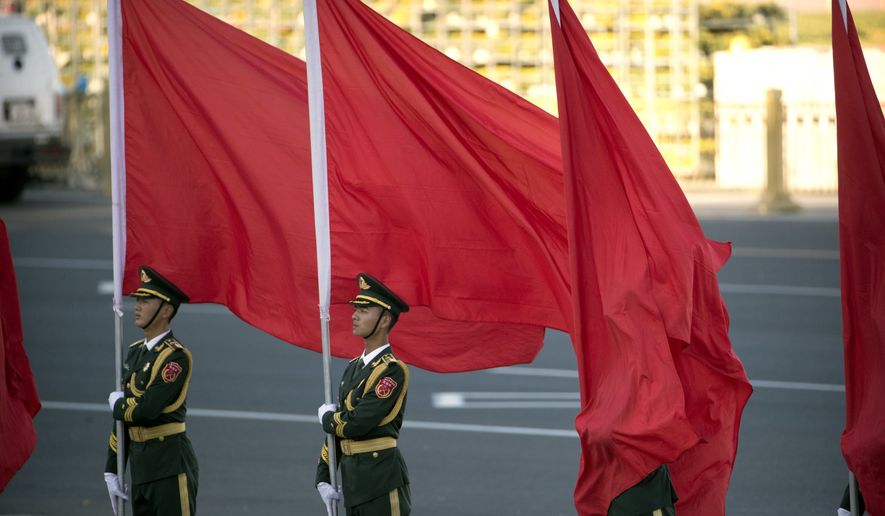OPINION:
If you have not heard of One Belt, One Road you are missing what could be the landmark tale of this entire century. It is a saga of China’s grand strategy that could threaten American interests at every level.
Begun in 2013 as an initiative by President Xi Jinping, One Belt, One Road (OBOR) has received a tremendous amount of attention. The program has been primarily aimed toward what appears to be a massive economic endeavor. Divided along a land-based route titled the Silk Road Economic Belt (SREB) and a sea-based route, the Maritime Silk Road (MSR), it is an overt attempt by China to enter the 21st century as a global power. The debate among many Western circles is whether or not this titanic economic venture has militaristic and imperialistic overtones.
This is a surprising question since the historical Silk Road was all of the above. Started by the Han dynasty, the Silk Road was used to knit together an economic and military power, creating what some historians dub the Pax Sinica, fielding an army of over a million and extending into East and South Asia. It seems a dubious proposition to compartmentalize Chinese objectives, and the real question is not whether China will use the One Belt, One Road project for political and military influence, but how.
The OBOR project could be the largest diplomatic, military, economic initiative of the modern age. It is exactly in line with contemporary Chinese strategic statements that desire a “harmonious world” system by taking advantage of a period of “strategic opportunity.” Driven by nationalistic chauvinism, a climate of resource unpredictability, the endorsement of the “First Island Chain” policy fits the goals of OBOR completely. It is where the PRC seeks to initially dominate East Asia, South Asia, Central Asia and beyond. Chinese foreign policy is the textbook example of international relations realism and to expect China to compartmentalize its goals would be foolish, dangerous and childish.
OBOR can become the umbrella for every major Chinese strategic goal worldwide under the guise of an economic development plan that can coerce or cajole many of their third world interests.
This should be of special concern as the United States is questioning its commitment to various free trade regimes that were also designed not only for economic benefits but also for American grand strategy imperatives.
OBOR would eventually engulf over 60 countries and 65 percent of the world’s population with costs ranging from “low ball” estimates of $900 billion to highs of eight trillion dollars. It is not only foreign investment, but Chinese bank credits, and aid packages that are often under the auspices of the Chinese-dominated Asian Infrastructure and Investment bank. The land route envisioned stretches from Singapore to Madrid, Spain. The sea route extends from Dar es Salaam in Tanzania, to Jakarta, Indonesia, toward ultimately the port of Piraeus near Athens.
None of this is happening in a strategic vacuum, China’s $147 billion military budget, focused heavily on the American targeted anti-access/area-denial strategy, the deployment of its first aircraft carrier, the new naval base on Hainan island, a massive increase in land-to-sea ballistic missiles, massive investment in modernizing China’s strategic nuclear arsenal, arms and missile technology proliferation, anti-satellite missiles, space weapon research, and the continued use of the North Korean regime as a bargaining chip, let alone her exhaustively chronicled actions in the South China Sea. It is no wonder there is concern among China’s neighbors, specifically Japan and India attempting to create alternative land and sea routes.
There are many areas of special military concern regarding One Belt, One Road. Number one among these is China’s first major military outpost in Djibouti, Africa. This is linked to their lease on port facilities in Darwin, Australia, the naval facility at Gwadar Pakistan, the training of Special Forces in Kazakhstan, recent activity in Sri Lanka and Chinese economic and military activity in Afghanistan. It is more than curious that Frontier Services Group, formerly Blackwater, has received a contract by the Chinese government to set up a base in Yunnan province to train security personnel for OBOR related endeavors.
One Belt, One Road is not limited to Terra Firma as China is attempting to create a rival to U.S.-dominated GPS with its own BDS alternative that would link to OBOR’s routes.
Finally, Chinese military doctrine is keeping pace by indicating that China’s military will reserve the right to intervene where and when future OBOR assets are threatened.
It would be comical to think that China would not use the massive presence of Chinese citizens and infrastructure and utilize this for intelligence gathering, covert operations, Special Forces insertion, and eventually overt military activity. One Belt, One Road gives the world a glimpse of an alternate future where the Pax Americana is no more, and America retreats from the scene. Americans cannot claim to be taken by surprise and must react with the dynamism, innovation, and power that the world associates with the American spirit. If, however, we choose to isolate ourselves, ignore OBOR, or lead from behind, the Chinese will not only achieve their economic and military dominance, but may fill in the vacuum left by the apathetic United States and be well on their way to one day dictating to us, terms of negotiation on every and all fronts.
• Lamont Colucci is associate professor of politics at Ripon College and author of “The National Security Doctrines of the American Presidency: How they Shape our Present and Future” (Praeger, 2012).




Please read our comment policy before commenting.